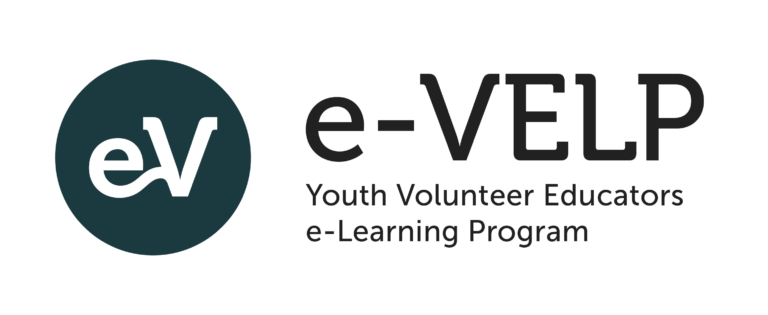Unit D.1.1 Use social media in your VE journey in order to engage people
Use social media in your VE journey
Use social media in your VE journey in order to engage people
Use social media in your VE journey in order to engage people
Use social media in your VE journey in order to engage people
– What is the most exciting thing you want to learn about social media?
– Do you use social media? If so, what do you use it for?
Post your answers and get engaged in the social media Forum.

Social media represents tools, websites, applications and they are all great for sharing, creating, content, videos, ideas, pictures.


Objectives
The first step in our VE journey through social media is to set our objectives.
Please write in your notebook  what would you like to achieve with your workshop and how can social media help you achieve this?
what would you like to achieve with your workshop and how can social media help you achieve this?
For example:
– By the end of the first month of my VE journey, I would like to have 25 participants in my workshop. Social media can help me to attract this number of participants.
– For a period of one month, I will create at least one post each week about Arabic culture in order to increase interest and to raise awareness about other cultures.
Target audience
The second step is to determine the target audience for your workshop. Your target group is the intended audience for your workshop. The more you understand about the individuals in that target group, the better you’ll be able to tailor your messages.
Write down  some ideas on how you use social media to reach out to different target groups that you identified for your workshop. For example, if your target audience are young people between the ages of 18 to 25, you should promote your workshop on instagram or tiktok. If your target group are young people between the ages of 35 to 45 who are interested in economics, you should target them on Linkedin.
some ideas on how you use social media to reach out to different target groups that you identified for your workshop. For example, if your target audience are young people between the ages of 18 to 25, you should promote your workshop on instagram or tiktok. If your target group are young people between the ages of 35 to 45 who are interested in economics, you should target them on Linkedin.
Channels
The third step is to select the social media channels you will use. You can use one or multiple channels to promote your workshop. In order to use multiple channels you need to correlate them. Understanding your target group implies understanding which channels they’re more inclined to use. Once you’ve done that, we can then move on to identifying the networks and channels to market and get your message across. It’s important to know that different channels are right for different target groups.
Message
The fourth step is the message itself – you need to think about what you want to tell your audience about the workshop. When developing content you keep in mind the following things:
– The topic of your workshop
– Relevance, according to the needs of your community
– Style – it should be consistent
– Reflection – assessing and defining the strength
Consider: Is that content piece strong? Would other people like it?

As further readings we recommend: Social media playbook
How to start building a network?
In order to get the most out of your network, you need to think: what are the outcomes you want to achieve from this opportunity? They could include a partnership offer or increased visibility. Prioritising these goals will help you to understand who might be most useful for you in the process. Think “quality over quantity” when building a network and focus on relationships of value as well as connecting over a common context.
How to start? Seek out someone:
– you’ve met in a professional context who impressed you
– you think you could learn from / who organized a similar workshop
– you used to work with and respected
Find out where they are most active professionally, e.g. LinkedIn, Instagram, or Twitter, and reach out. Avoid the default invitation message – add a brief personal note to your invitation. You could use this opportunity to say a few words of greeting and why you’d like to connect, for example:
Hi Anne, I saw your organization is very active in the field of […] and was very inspired. I would like to offer a TeachSurfing workshop for your community on the topic of <topic>. I am happy to adjust my workshop content based on your interest and preferences. I am looking forward to hearing from you.
Thanks, Sarah
Now take a few minutes to go to LinkedIn, Twitter and/or Instagram and see if you can identify the following and write the answers to the questions in your notebook ![]() :
:
1.Which hashtags or topic labels are frequently used by people in the field of your workshop?
2.What are some groups, pages or online events/activities where people are active in the field of your workshop?
3.Which three to five people seem to be influential and active in the field of your workshop?
Branding yourself with CANVA
The brand’s personality is an element that helps people identify with it; it helps them decide whether or not they would like to join you.
Different fonts evoke different emotions, so you want to make sure your font fits your brand. Finding the right font comes back to understanding what you want to communicate, who you are and why you’re communicating in this way. For example: IKEA has all caps to submit their position as a powerhouse and because it is an acronym. (1000 Logos)
The brand voice is how your brand is expressed through language. Tip: Always read what you’ve written out loud to test whether it’s something someone would actually say.
Semiotics plays a huge part in color. Color has a really big impact on your brand. For example: blue conveys safety and security – it’s used for finance, insurance. Red conveys excitement and stimulates hunger, and it’s used by so many fast food brands.
Here you can see a video on how to use CANVA for beginners:
Create in CANVA an instagram post about your culture. Take in consideration the fonts, the colours, and the voice.
Include the program tag #eVELP so other students can also find, comment and share your post.
Write you answers in your notebook ![]() :
:
1.What did I like in this theme?
2.How satisfied I am with my social media skills?










